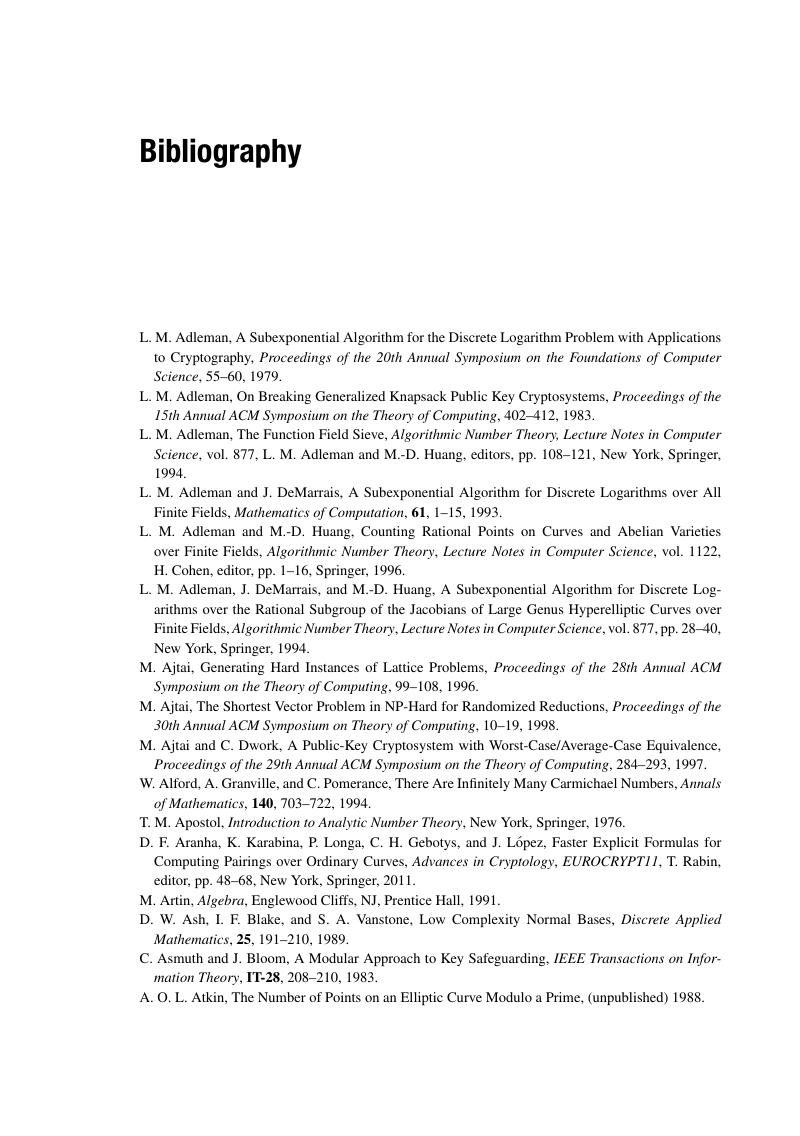Book contents
- Frontmatter
- Epigraph
- Contents
- Preface
- Acknowledgments
- 1 Introduction
- 2 The integers
- 3 Cryptography based on the integer ring
- 4 Cryptography based on the discrete logarithm
- 5 Information-theoretic methods in cryptography
- 6 Block ciphers
- 7 Stream ciphers
- 8 Authentication and ownership protection
- 9 Groups, rings, and fields
- 10 Cryptography based on elliptic curves
- 11 Cryptography based on hyperelliptic curves
- 12 Cryptography based on bilinear pairings
- 13 Implementation
- 14 Cryptographic protocols for security and identification
- 15 More public-key cryptography
- References
- Index
- References
References
Published online by Cambridge University Press: 05 April 2014
- Frontmatter
- Epigraph
- Contents
- Preface
- Acknowledgments
- 1 Introduction
- 2 The integers
- 3 Cryptography based on the integer ring
- 4 Cryptography based on the discrete logarithm
- 5 Information-theoretic methods in cryptography
- 6 Block ciphers
- 7 Stream ciphers
- 8 Authentication and ownership protection
- 9 Groups, rings, and fields
- 10 Cryptography based on elliptic curves
- 11 Cryptography based on hyperelliptic curves
- 12 Cryptography based on bilinear pairings
- 13 Implementation
- 14 Cryptographic protocols for security and identification
- 15 More public-key cryptography
- References
- Index
- References
Summary

- Type
- Chapter
- Information
- Cryptography and Secure Communication , pp. 558 - 575Publisher: Cambridge University PressPrint publication year: 2014



